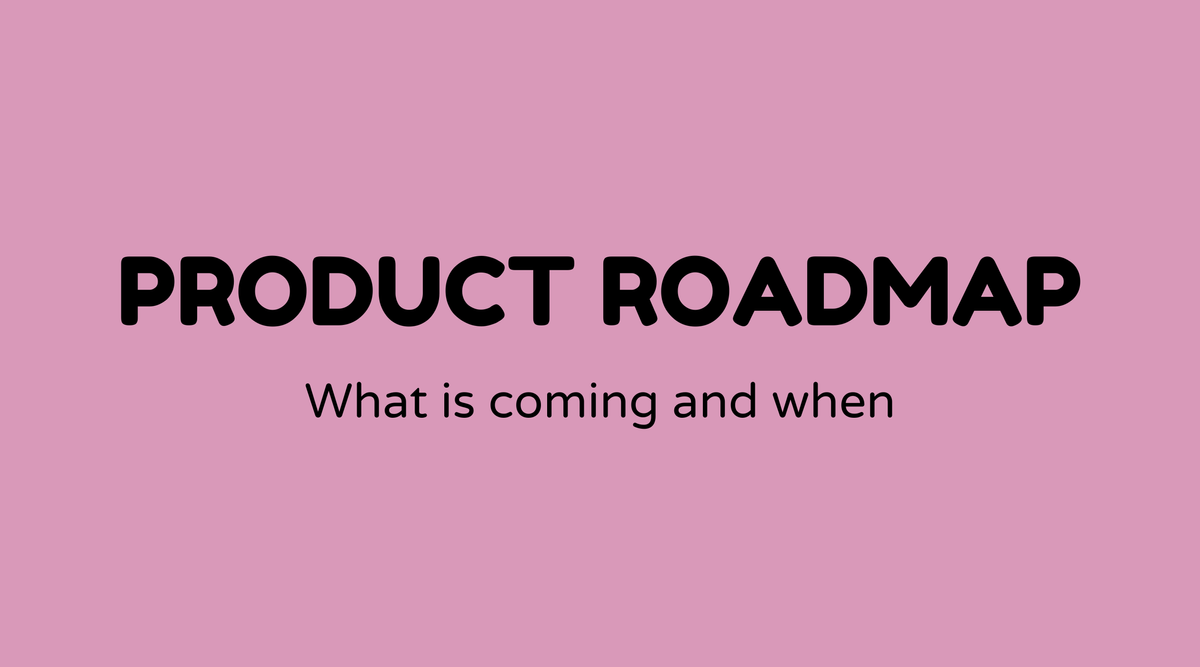Product roadmap

Overview of Product Roadmap:
A product roadmap acts as a strategic guide, providing a clear outlook on the vision and direction of a product over time. It serves as a top-level planning document that lays the groundwork for decision-making in a constantly changing environment. A carefully developed product roadmap not only describes the what, why, and how of the product but also communicates this to stakeholders, ensuring everyone is on the same page.
In the bustling realm of product development, it can be easy to lose sight of long-term goals amid daily tasks. That's where a product roadmap proves valuable. Think of it as a compass; it directs your product toward its ultimate objective, ensuring each action taken contributes to the greater vision. This guide will lead you through the intricacies of designing an effective product roadmap.
Why Product Roadmap Matters:
Every successful product journey starts with a solid roadmap. It is important because it aligns the team with clear objectives and timelines, ensuring everyone is working toward the same result. By establishing clear priorities, it simplifies the process, allowing teams to concentrate on what truly matters rather than what appears urgent.
Moreover, the product roadmap assists in resource allocation, anticipating potential challenges, and providing a foundation for accepting or rejecting new initiatives. It serves as a tool for collaboration and transparency, promoting proactive discussions about objectives and expectations among team members and stakeholders.
What is a Product Roadmap:
A product roadmap is a visual document that outlines the direction, priorities, and progress of a product over time. It presents strategic objectives, features, tasks, and projected timelines. Consider it a visual storytelling device that illustrates how a product is intended to develop, including projected milestones and deliverables.
There are various categories of product roadmaps tailored to different purposes:
- Strategic Roadmaps: Concentrate on overarching goals and the long-term vision.
- Release Plans: Detail specific features and functionalities for upcoming launches.
- Feature Roadmaps: Showcase specific features to be developed, along with timelines.
- Technology Roadmaps: Illustrate the technology stack and dependencies needed for the product's growth.
How to Create a Product Roadmap:
Developing a product roadmap involves strategic planning and ongoing updates. Here’s a streamlined process to get started:
- Define Vision and Strategy: Establish the product's primary goals in line with business objectives.
- Identify Key Themes and Goals: Break down the vision into specific, achievable themes and objectives.
- Prioritize Features and Tasks: Determine which features are essential and rank them based on the value and effort required.
- Set Timelines and Milestones: Define reasonable timelines for task completion and utilize milestones to motivate team focus.
- Engage with Key Stakeholders: Regularly consult with stakeholders for feedback and ensure alignment.
- Review and Adjust: A roadmap is not fixed; frequently review and adjust as needed, reflecting new insights or changes in strategy.
Various tools can aid in building a roadmap, such as Aha!, Roadmunk, and Jira. The choice of tool depends on the specific needs and complexity of your product and organization.
Examples of Product Roadmap:
- Apple's iOS Updates: Apple's annual WWDC displays the roadmap for iOS, outlining upcoming features, technological alignment, and strategic focus for the next year.
- Tesla’s Model Releases: Through its event presentations and shareholder communications, Tesla shares an evolving roadmap, emphasizing major vehicle releases and technological advancements.
- Spotify’s Playlists and New Features: Spotify frequently provides updates on algorithm changes, new features, and strategic partnerships, reflecting roadmaps aimed at user experience and technological progress.
FAQs
-
What’s the distinction between a roadmap and a backlog?
- A roadmap is a strategic document outlining the plan, while a backlog is a tactical list of tasks and features awaiting work.
-
How often should a product roadmap be updated?
- Ideally, a roadmap should be reviewed quarterly, though updates may be required sooner due to major shifts in market dynamics or business strategy.
-
Is the product roadmap the same as a project plan?
- No, a roadmap focuses on strategic product evolution, whereas a project plan details the execution steps for achieving a specific aspect of that journey.
-
Can a roadmap be adjusted?
- Yes, it's essential to maintain flexibility in roadmaps to adapt to new information or changes in the business environment while staying focused on the end goal.
-
Who is responsible for the product roadmap?
- Typically, the product manager leads the creation and maintenance of the roadmap, but success relies on input and collaboration from cross-functional teams.
-
Where can I find examples of product roadmaps in action?
- Explore industry publications, company blogs, or attend conferences where companies showcase their strategic plans, such as Apple's WWDC or Google's I/O conferences.



